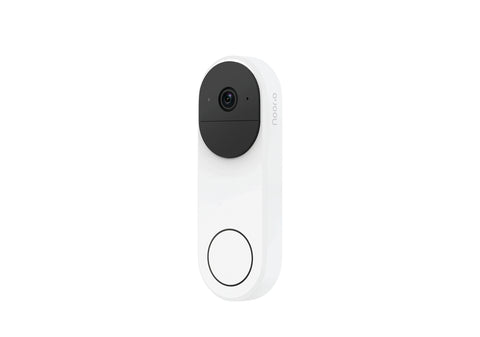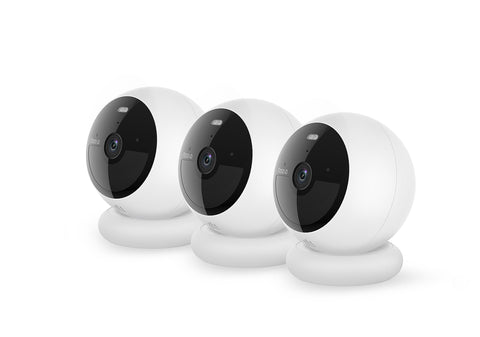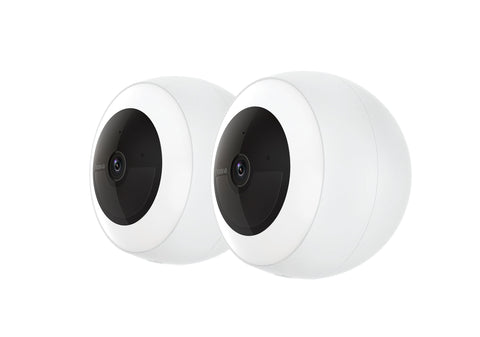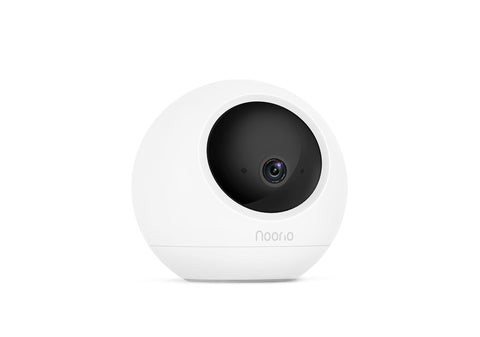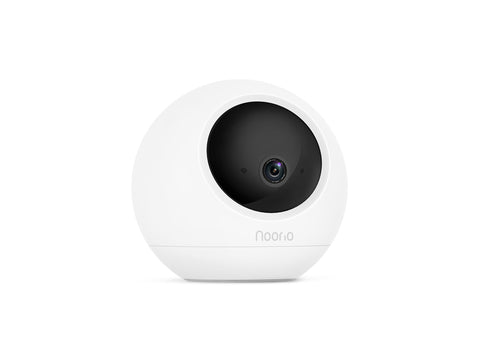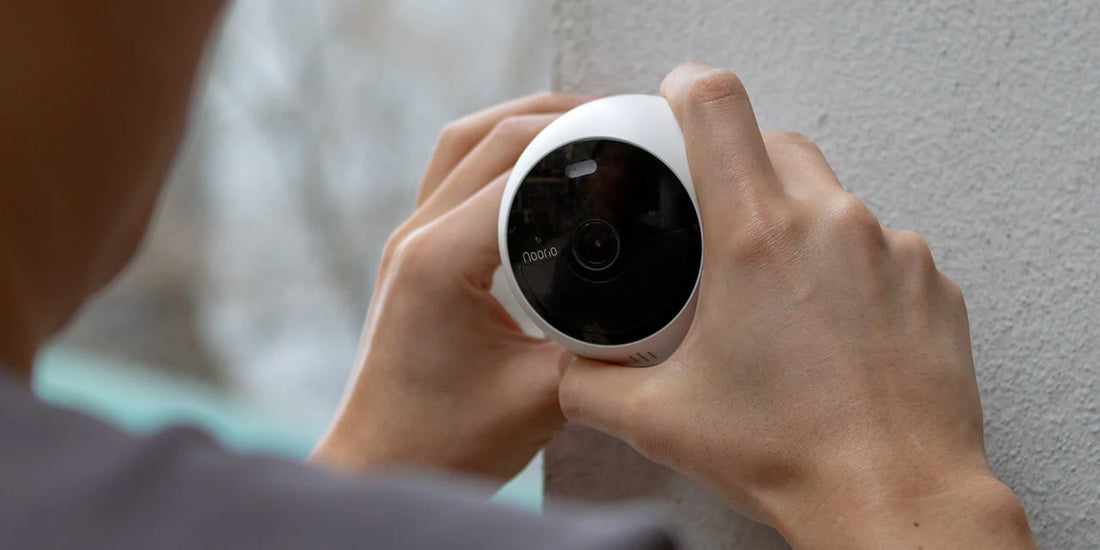Cellular security cameras have emerged as a versatile remote monitoring solution for home and business owners seeking an alternative to traditional WiFi cameras. This comprehensive guide will explore everything you need to know about cellular surveillance cameras - how they work, key benefits, purchase considerations, setup and usage tips, applications, and even a peek into the future of this rapidly evolving technology.
An Introduction to Cellular Security Cameras
Cellular security cameras, also known as cellular trail cameras or LTE cameras, are wireless surveillance devices that utilize cellular networks to transmit video footage and images. The key advantage of cellular cameras is their ability to operate completely independent of WiFi networks, internet connectivity, or hardwired power sources.
These cameras contain an integrated SIM card or eSIM embedded directly in the device, allowing them to connect to and transmit data over 3G, 4G LTE, and even emerging 5G networks offered by cellular providers like AT&T, Verizon, T-Mobile, etc.
Unlike WiFi cameras like Noorio that must remain within range of a wireless router or access point, cellular cameras can be flexibly placed and moved to any location covered by the cellular network. Their wireless design also avoids the need to run power cords or Ethernet cables to the camera.
For homeowners and businesses seeking an easy-to-install yet robust remote monitoring system, cellular security cameras offer an appealing balance of convenience and performance. Let's explore their capabilities in more detail.
Key Benefits of Cellular Security Cameras
1. Remote Access from Anywhere
The #1 benefit of cellular security cameras is the ability to access live video feeds and receive mobile alerts from practically anywhere at anytime. As long as you have cellular service in the area, you can view real-time footage on your smartphone and receive motion-activated alerts wherever you roam.
This remote connectivity is invaluable for home security, allowing you to check on your home while at work or on vacation. Business owners can also monitor activity at multiple locations whether they are onsite or away. Cellular connectivity delivers seamless remote access without geographical restrictions.
2. Reliable Connectivity
Cellular cameras aren't dependent on your local WiFi network or internet service provider. They tap directly into nationwide cellular networks operated by mobile carriers, so you don't have to worry about network outages or disruptions that can potentially create coverage gaps.
Surveillance systems transmit critical visual data where consistent connectivity is paramount. Cellular networks provide that rock-solid reliability for continuous monitoring without missing a beat.
3. Flexible Placement
Since cellular cameras don't rely on WiFi range or wired power sources, their placement is extremely flexible. You can mount them in spots that may have weak (or zero) WiFi coverage from your router but still get a strong cellular signal.
For example, they work great for remote monitoring of construction sites, commercial warehouses, rural barns, or wildlife areas where running cables would be difficult. Their wireless design means going where no camera has gone before!

4. Scalability and Expandability
Adding more traditional WiFi security cameras can strain your wireless network and become expensive having to add sensors and cabling. With cellular cameras, expanding your coverage is as simple as installing additional cameras within the carrier's service area.
Large enterprises can scale up surveillance capabilities across multiple locations cost-effectively. And if cellular reception is good, you can space cameras far apart without needing to fill gaps with boosters and repeaters like WiFi networks often require.
5. Enhanced Power Options
Cellular cameras aren't limited by having to place them near AC outlets for power. Many feature built-in high-capacity rechargeable batteries that provide months of standby on a single charge.
Solar-powered cellular cameras are also popular options that allow virtually unlimited operation if placed in a spot with decent sunlight exposure. And for permanent placement, you can connect cellular cameras to external AC or DC power sources.
How Do Cellular Security Cameras Work Exactly?
Now that we've covered the key benefits, you may be wondering - how exactly do these things work? Let's break it down step-by-step.
Step 1: Capturing Video Footage
Cellular security cameras contain image sensors just like any other surveillance camera to capture video or still images. Sensor resolution can range from 1080P HD to crystal clear 4K Ultra HD. Lenses made of durable materials focus the light effectively.
A cellular trail camera operating in daytime uses the same image capturing technology as a WiFi camera. But higher-end cellular cameras also include infrared night vision capability for seeing in total darkness.

Step 2: Connecting to the Cellular Network
Instead of connecting to a WiFi network, cellular cameras use an integrated cellular modem to link to mobile data networks. Most cellular cameras have a standard SIM card slot that accepts cards from major carriers, which you provide during setup. Some cameras utilize eSIM technology with the account provisioned remotely.
The camera establishes a data connection on the available cellular network - 3G, 4G LTE, or 5G. Carriers typically charge a monthly fee for the mobile data required, just like with a smartphone plan. Some cameras can intelligently switch between cellular and WiFi to conserve data usage.
Step 3: Transmitting Footage to Cloud or App
Once captured, the video footage and still images are transmitted from the camera to either a cloud storage server or directly to the user's smartphone app over the cellular connection.
Cloud-based storage offers secure long-term archiving of footage that can also be made accessible to law enforcement if required. With cloud storage plans, you don't need SD cards in each camera.

For real-time monitoring, the camera can stream footage directly to the manufacturer's mobile app on the owner's smartphone via the cellular network. This allows live remote viewing from anywhere.
Step 4: Remote Access and Alerts
Using the app or web portal, users can access real-time feeds, recorded clips, and images. Features like zoom, playback controls, and two-way talk further enhance the experience. Intelligent motion detection triggers instant alerts to your phone when suspicious activity occurs in the camera's view. Noorio have these features all, take a look from Noorio cameras.
Since it all happens wirelessly over cellular, location of the cameras and the user's mobile device don't matter - remote access is freely available anywhere with cellular service.
Key Factors When Purchasing Cellular Security Cameras
When shopping for cellular surveillance cameras, keep the following purchase considerations in mind:
Cellular Network Compatibility
Select a camera that works on your carrier's network - this may include major providers like AT&T, Verizon, T-Mobile, etc. Some cameras offer cross-carrier compatibility or dual-SIM slots. Also ensure the camera supports 4G LTE connectivity or future-proof 5G networks if available in your area.
Video Resolution
Choose a camera that records crisp and detailed footage. Options range from 720p HD to crystal clear 4K Ultra HD resolution. High-res cameras capture finer details like faces, license plates, etc. But they require more data usage.
night Vision Capabilities
To monitor property after dark, cellular cameras should have infrared (IR) night vision or low light sensors. IR cameras include IR LEDs that illuminate the scene with infrared light invisible to the human eye. Look for cameras with IR range of at least 100 feet.
Motion Detection Features
Advanced motion sensors detect and alert you to movement and activity within the camera's field of view instead of capturing all motion. This way you only receive notifications when needed instead of constant false alerts.
Cloud Storage & MicroSD Options
Cloud storage securely archives footage offsite so it's accessible from anywhere. But factor in subscription costs. Local storage with a microSD card avoids monthly fees but data could be lost if camera is damaged or stolen. Some cameras offer both options.
Power Source
Hardwired, battery, and solar power options are available. Hardwired offers unlimited operation but limits placement. Batteries and solar panels allow flexibility but eventually need recharging or replacement. Understand the power demands before purchasing for your needs.
Physical Construction
Ensure the camera body is rugged and weatherproof (IP65 rated or better). Mounting options like adjustable swivel brackets make positioning easier. There should be external antenna ports to connect larger antennas if needed.
Check Noorio outdoor wireless home camera with waterproof!

Setting up Your Cellular Security Cameras
Once you select the right cellular surveillance cameras for your needs, the next step is proper setup and installation. Here are some tips for seamless deployment:
Activate Cellular Service
You'll need to establish service with your preferred carrier by inserting the SIM card into the camera and registering it on a shared or standalone data plan. Some cameras allow you to remotely provision eSIM service. Choose an adequate monthly data allowance to avoid overages.
Position Cameras Strategically
Mount the cameras in optimal spots with unobstructed line-of-sight, taking lighting conditions and cellular reception into account. Position them to cover critical entry and exit points, high-value assets, remote areas, etc. Use swivel mounts for precise aiming.
Adjust Settings & Configure App
Via the app or web portal, set up motion detection, alerts, recording schedule, image quality, etc. Tweak settings as needed for lighting conditions and activity patterns. Grant access to any other users who need to view or manage the footage.

Install External Antennas If Required
Here is the continuation of the article:
If cellular reception is marginal, connect a higher gain external antenna to boost the signal strength. Some cameras have SMA antenna ports to attach flexible rubber ducky or larger directional antennas. Proper antennas make a huge difference.
Configure Power Source
For battery powered cameras, insert fully charged batteries and connect solar panels if being used. For permanent AC power, connect the camera to an outlet via the AC adapter. Use the manufacturer's cable if an external DC power source like a battery bank is being used.
Mount Cameras Securely
Attach the base plate or mounting bracket securely using screws into a stud or solid surface. For outdoor and high-vibration environments, use vibration damping pads between surfaces and mount tightly. Don't detach antennas before positioning, as this can damage ports.
Adjust Motion Detection Zones
Fine-tune motion detection by drawing custom activity zones and tweak sensitivity to minimize false alerts. Properly adjusted motion settings ensure you're notified only when movement is detected in areas of interest.
Establish Maintenance Plan
Routinely recharge/replace batteries every 6-12 months or based on usage. Periodically check antennas and camera casing for physical damage. Monitor mobile data usage to avoid overages. Maintain landscaping if vegetation starts obstructing the view.
Maximizing Performance & Security
To optimize your cellular surveillance cameras and usage once deployed, keep these tips in mind:
Utilize the Mobile App
The app provided by the camera manufacturer lets you view live feeds, configure settings, download clips, and receive motion alerts remotely. Use the app daily to monitor activity and fine-tune camera operation.
Turn Off Indicator Lights
Some cameras have LED status lights that may be visible at night, alerting your presence. Turn these off in the app for discretion if required. You can still see camera status via the app.
Adjust Image Settings Remotely
Cameras may have options like brightness, contrast, and IR night vision adjustments that can be tweaked in real-time based on current lighting conditions and activity. Optimize based on factors like time of day, weather, seasons, etc.
Use Unique Camera Passwords
Don't leave default passwords set. Set a strong unique password for each camera in your system. Update passwords periodically. This prevents unauthorized access if the credentials somehow get compromised.
Position Cameras Creatively
Take advantage of the wireless design and hide or position cameras discreetly around property where criminals won't easily spot them if breached. For example, conceal them amidst plants or in nooks facing key areas.
Enable Encrypted Data Streaming
Choose cameras that transmit footage securely using encryption like 128-bit AES to prevent interception of video data as it's streamed over the cellular network. Never use unsecured cameras.
Back Up Critical Footage
Download and save important clips like evidence of break-ins or accidents to a computer or cloud drive. Don't depend only on cloud camera storage in case something happens to the camera itself.
Monitor Usage Notifications
Stay on top of cellular data usage alerts from your carrier to avoid costly overages from the security camera traffic, especially if recording in higher resolution formats. Manage recordings and quality remotely if needed.
More security camera safe tips from our blog here:
- Are Security Camera Apps Safe? A Comprehensive Analysis 2023
- How to Prevent Security Cameras from Being Hacked (2023 Update)
- 10 Tips to Protect Your Wireless Home Security Camera from Hacking
Comparing Cellular Security Cameras vs. WiFi Cameras
| Feature | Cellular Security Cameras | WiFi Security Cameras |
|---|---|---|
| Connectivity | Cellular networks (3G, 4G, 5G) | WiFi router/network |
| Placement Flexibility | Anywhere with cellular signal | Limited by WiFi range |
| Remote Access | From anywhere with cellular service | Within range of WiFi network |
| Reliability | Rock-solid via cellular networks | Prone to WiFi dead zones |
| Scalability | Add cameras anywhere in service area | Limited by WiFi bandwidth |
| Power Options | Battery, solar, AC, DC | Outlet power mostly |
| Upfront Cost | Higher hardware cost | Lower equipment cost |
| Ongoing Cost | Monthly cellular data fees | No recurring fees(maybe cloud storage) |
Cellular and wireless cameras have their own sets of pros and cons for security applications. Let's compare some of the key differences:
WiFi Security Cameras
Pros
- Lower upfront cost of equipment
- Leverage existing home/office WiFi network
- Simple plug and play connectivity
Cons
- Require proximity to WiFi router or extenders
- Prone to WiFi dead zones and interference
- Limited placement flexibility
- Can tax network bandwidth if many cameras

Cellular Security Cameras
Pros
- Flexible installation anywhere with cellular signal
- Reliable connectivity via cellular networks
- Remote capabilities from anywhere
- Scales easily by adding more cameras
Cons
- Recurring monthly data plan cost
- Potential carrier coverage gaps
- Initial hardware cost is higher
- Data usage limits apply
Ultimately, cellular cameras are ideal if you need to monitor locations beyond the reach of your WiFi network or value uninterrupted connectivity for mission-critical surveillance. For indoor use or to supplement WiFi cameras, WiFi cameras may meet basic requirements at a lower cost.
Real-World Applications of Cellular Security Cameras
Now that you're familiar with the technology, let's explore some popular practical applications:
Home Security
For homeowners, cellular cameras provide robust property protection and peace of mind through features like:
- Full coverage beyond WiFi range to monitor driveways, barns, perimeters, entrances.
- Instant motion alerts to detect intruders and unusual activity from anywhere.
- Remote checking on children or pets if away from home.
- Two-way voice communication to ward off trespassers.
- Live view of property for home services like cleaners, contractors.
Business Surveillance
Businesses can leverage cellular cameras to:
- Monitor multiple buildings, entry points across large campuses.
- Keep an eye on remote offices, job sites, parking lots, loading docks.
- Deter theft and protect inventory at warehouses, distribution centers.
- Ensure employee safety and resolve disputes with recorded evidence.
- View visitor and customer activity for analytics.
Remote Monitoring
Other common applications include:
- Cabin and vacation property monitoring.
- Livestock, crops, and equipment oversight on farms.
- Construction site progress monitoring and liability protection.
- Wildlife research with trail cameras in natural habitats.
- Storm, wildfire, or flood response and damage assessment.
- News and media event coverage from anywhere instantly.
What Does the Future Hold for Cellular Security Cameras?
A few ways we may see cellular security cameras evolve with technological developments:
- Improved Video Quality - Increased megapixel sensors, 12 or 16X optical zoom capabilities, panoramic 180-degree fields of view, and brighter IR illumination for color night vision.
- Enhanced Battery Life - Solar charging capabilities, more efficient components and sensors to extend battery runtimes to 1 year+ on a single charge. Reduced bandwidth usage.
- 5G Connectivity - Faster 5G networks will enable higher bitrate video streaming with virtually real-time latency. Will also allow many more cellular cameras to co-exist in a given area.
- AI Integration - Onboard artificial intelligence for advanced analytics like license plate recognition, people identification, behavioral analysis to separate concerning activity from routine motion.
- Drone Integration - Wireless transmission of footage from aerial drones to provide an eye in the sky along with the camera network on premises.
- Smart Home Ecosystems - Improved integration with smart home platforms, allowing cellular cameras to trigger actions like turning on lights when motion is detected for a seamless automated security web.

Conclusion
Cellular trail cameras have matured into an incredibly useful remote monitoring tool, offering convenience, reliability and performance that gives WiFi cameras stiff competition. Their wireless design enables security and surveillance applications not possible with wired indoor cameras alone.
We've only scratched the surface of the possibilities as coverage expands and cellular providers build out 5G networks. For innovative home and business owners looking for the next evolution in video security, cellular cameras are certainly an exciting prospect worth exploring.
